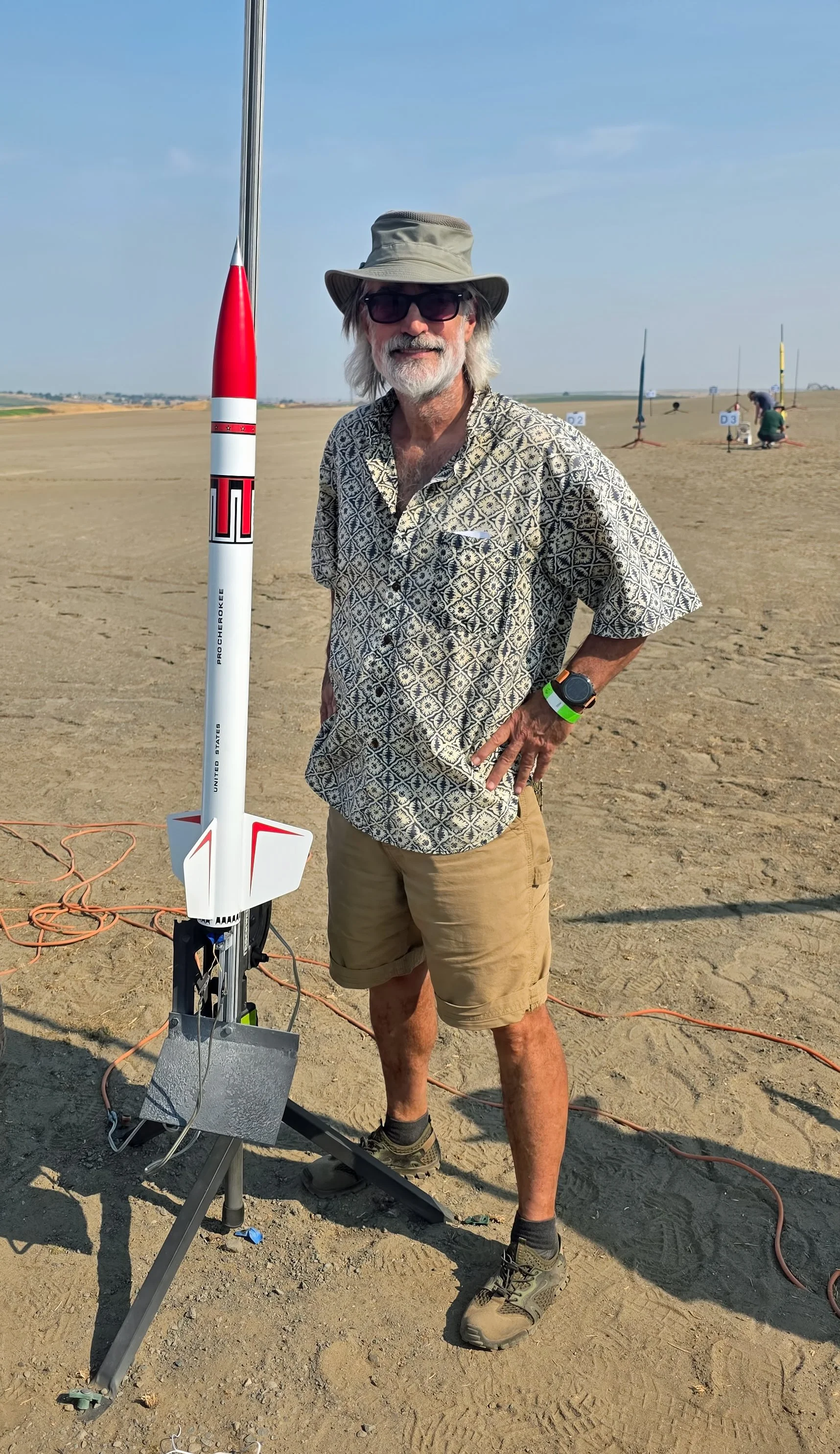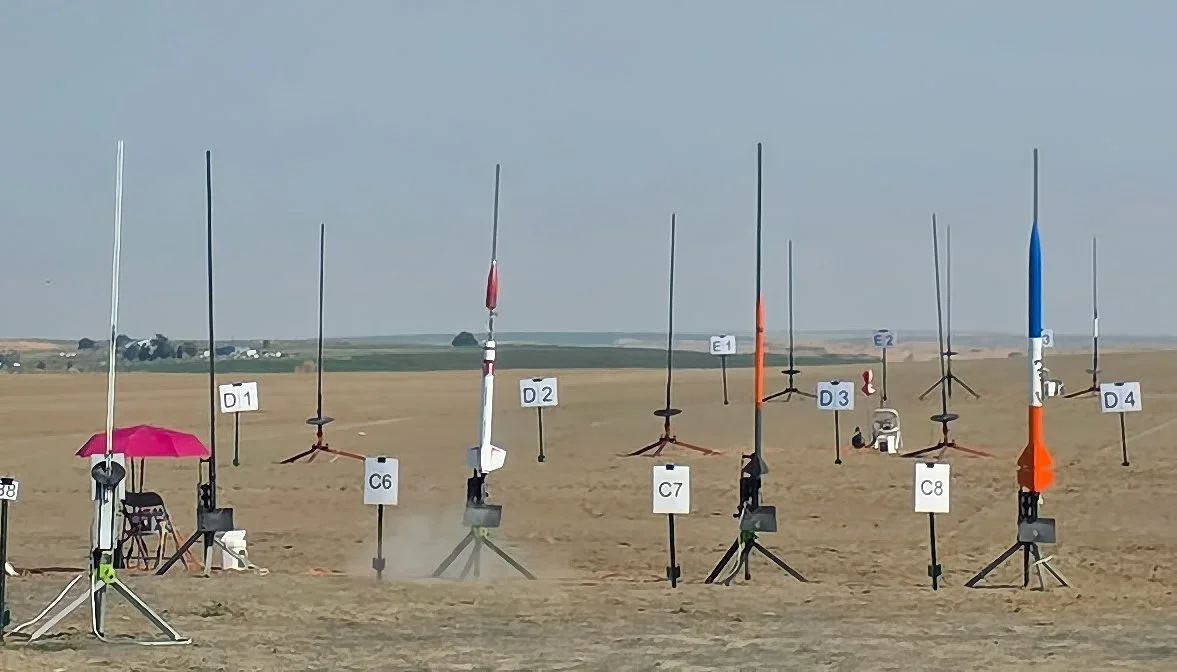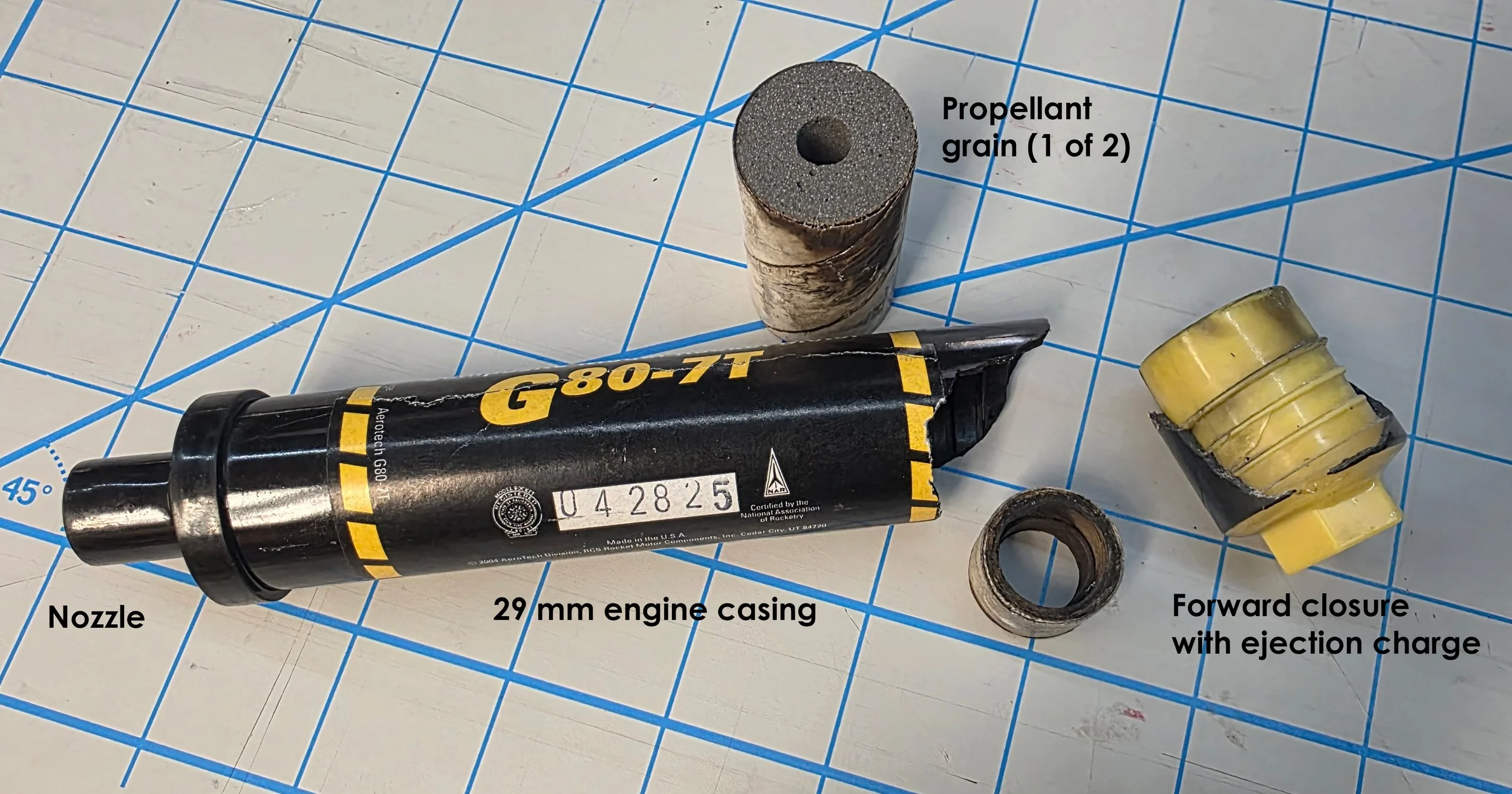was held today at the state line between Colorado and Utah. I successfully launched and recovered three mid-power rockets on a calm and sunny day in the Grand Valley. Always enormous fun.
The exhaust plume of a high-power rocket paints its trajectory as it heads skyward with the Book Cliffs serving as a scenic backdrop to the remote launch site.
Doorknob lifting off the rod on a F15-4 engine.
Nike Smoke Pro leaping off the pad on a composite F20-7W engine.
Nike Smoke Pro under chute during descent.
The mid-power Cherokee Pro heading up on a composite G77-7R engine to an apogee of 1,672 feet (510 m).

















































